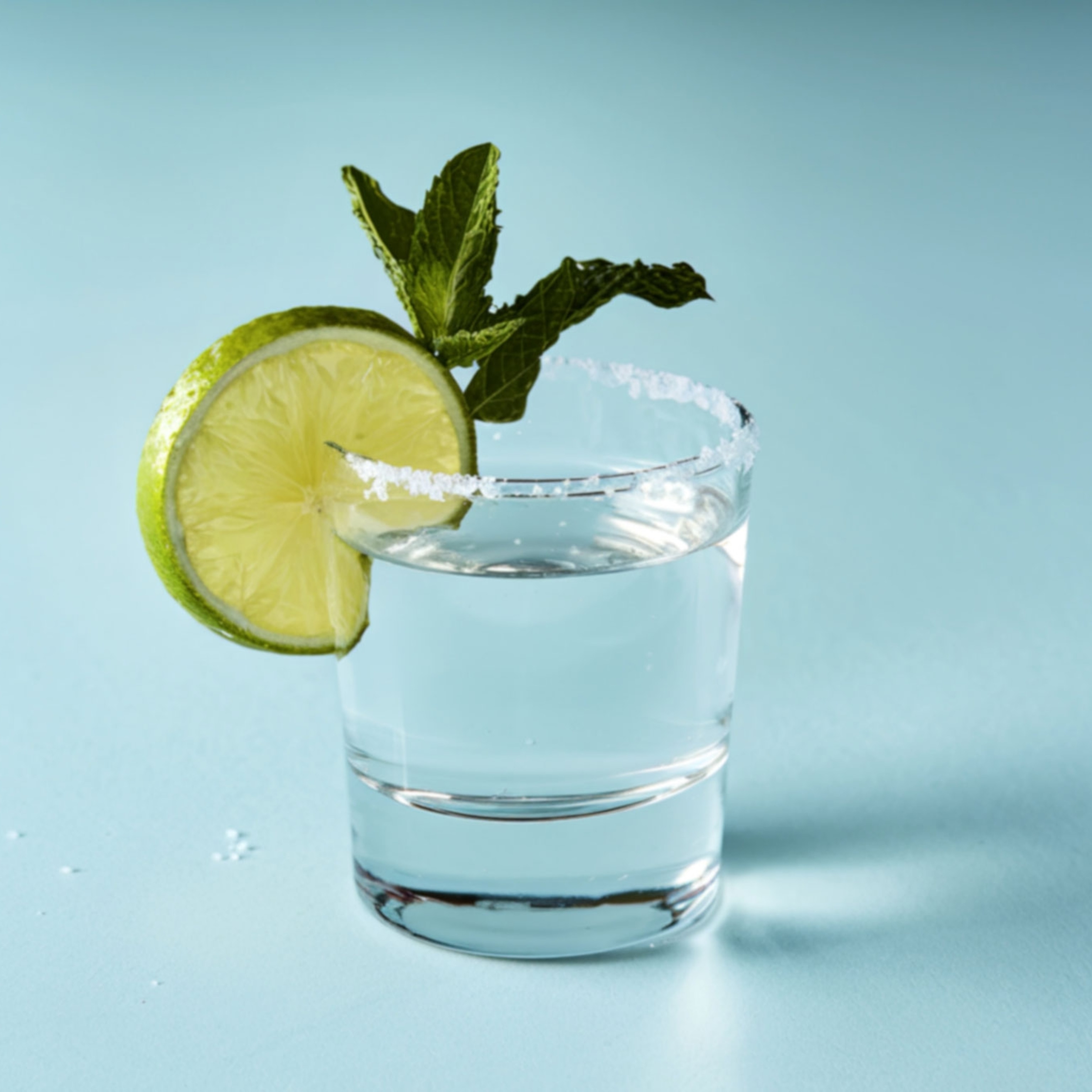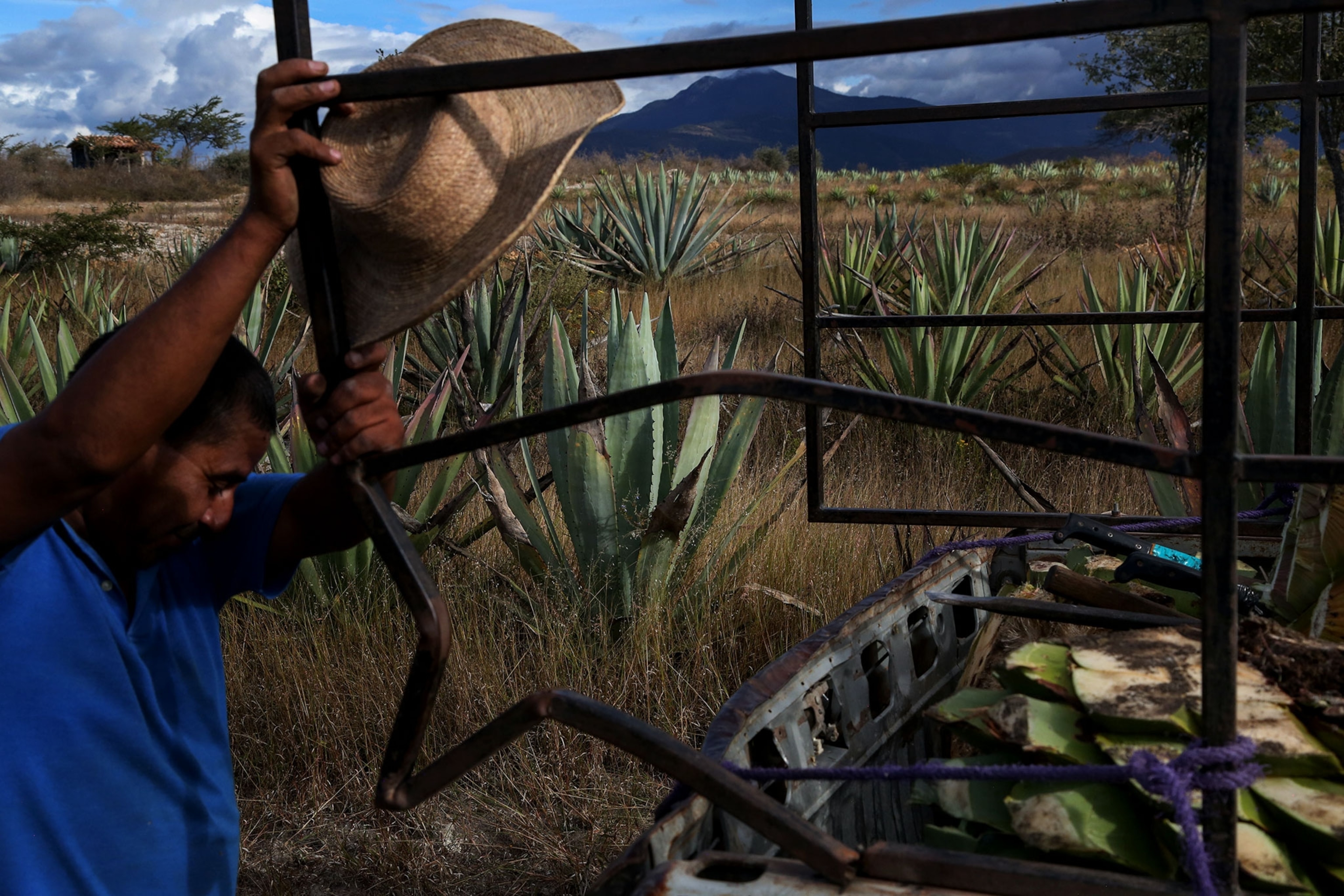
A Mezcal Boom Spurs Creative Approaches to Dwindling Agave
Farmers in Oaxaca, Mexico, are counting plants and trying to take advantage of rising prices without pushing an important species towards extinction.
Oaxaca — The windshield of Augustin Güendulain’s truck is cracked in the shape of an agave. The pickup is bent and battered bow to stern from years of abuse on Oaxacan backroads in the service of making mezcal, and, when I met him at a gas station in Miahuatlan a couple hours south of Oaxaca City, Güendulain had to fill a visibly low tire before I climbed into the bench seat.
There was a shot glass rolling around in the hole where the radio had once been. The crack is from a friend’s head: too much drinking and the truck had slipped off the road. Everyone survived and the truck still runs though. Güendulain laughed quietly as we rolled into the hills.
Many Americans have their own skull-jarring memories of drinking the worm at the bottom of a liter of firewater, but artisanal versions of mezcal have started to populate premium spirits menus around the world: no worms, smokey tasting notes, boutique pricing. If you’ve recently been to a bar where mustaches and unique cocktails predominate, you’ve probably seen a margarita with tequila replaced by it’s authentic, smokier brother mezcal. (Learn about our 9,000-year obsession with booze.)
It’s traditionally a farmers’ drink, made in small batches to be sipped out of votive candle holders at festivals. Güendulain’s family has been making it for five generations. They’ve always sold to neighbors, often in recycled bottles, but the boom in international sales of mezcal has encouraged the family to think about new markets. Güendulain has joined a collective of 35 maestros mezcaleros who share the costs of maintaining a label. He’s also carefully watching after his family’s agave.

Mezcal production has roughly doubled since 2011, adding pressure in many new ways to what has long been an informal, almost moonshine, business. Though the shift has opened financial opportunities for some of Mexico’s poorest regions, the legacy of informality has left certain elements exposed, most vitally the future of agave.
The success of the tequila industry to the north in Jalisco poses a cautionary tale for many mezcaleros. Formally, tequila is a subset of mezcal made only of blue agave but it has grown its own separate branding equally as the fuel for frat parties and as an ultimate luxury. In that transition over time, the rich historical legacy has been squeezed into an often acerbic industrial standard, with massive fortunes concentrated in the hands of a few and with hundreds of planted hectares reduced to a single strain of genetically identical clones.
A Tradition in Flux
Mezcal’s history is tied to a rich diversity with more than 30 types of agave used to make the spirit, each yielding a different flavor and terroir ranging from tropical fruit to peat to gentle dust. In Oaxaca, it’s up to maestros mezcaleros like Güendulain to preserve that inheritance even as the spirit is being adopted by a hip cosmopolitan elite. (Learn about the relationship between agave and bats.)
Right now, Oaxaca is three years into an agave crisis and the price per kilo of cultivated espadin is up to as much as 7 pesos per kilo from .5 pesos. This tends to happen every ten to twelve years as a crop of espadin matures en masse, prices drop, and farmers swear to never again plant agave—which leads to a new price spike.

Espadin needs five to six years to mature and so the cycle plays out with just enough delay to string everyone along. This time though, with the recent rise in the mezcal market, no one knows exactly how the cycle will play out, particularly because a new process in Jalisco can extract juice from agaves even before they’re mature.
When Güendulain had gassed the truck up and deemed it sufficiently roadworthy, he pointed us onto a dusty track running out of town. As we drove through the countryside, we rolled past a patchwork of small agave fields and other crops. The response to the current shortage could turn those into a sea of espadin to rival the rows of blue agave in Jalisco that stretch to the horizon like corn in Iowa. The more clear threat though is to the agave that’s not in fields. Most varietals are left to grow in the wild where they can take up to 35 years to mature.
After about 45 minutes, Güendulain pulled the truck off a narrow track outside the town of Amatlan and pointed out the agave stalks towering above the surrounding scrub brush. “Wild ones, we just go and cut them,” he said, “otherwise they just dry out.”
He and his field hand, Pedro Reyes, shouldered machetes and a massive crow bar and started picking through the undergrowth towards the masts swaying with seed pods. The spines of agave are sharp enough to draw blood through jeans, but Güendulain trimmed them off with a few expert machete strokes. The sap is caustic, so he called Reyes over to pry the pinas from the ground. The pair quickly cut nine agaves and rolled them down the slope to the truck.
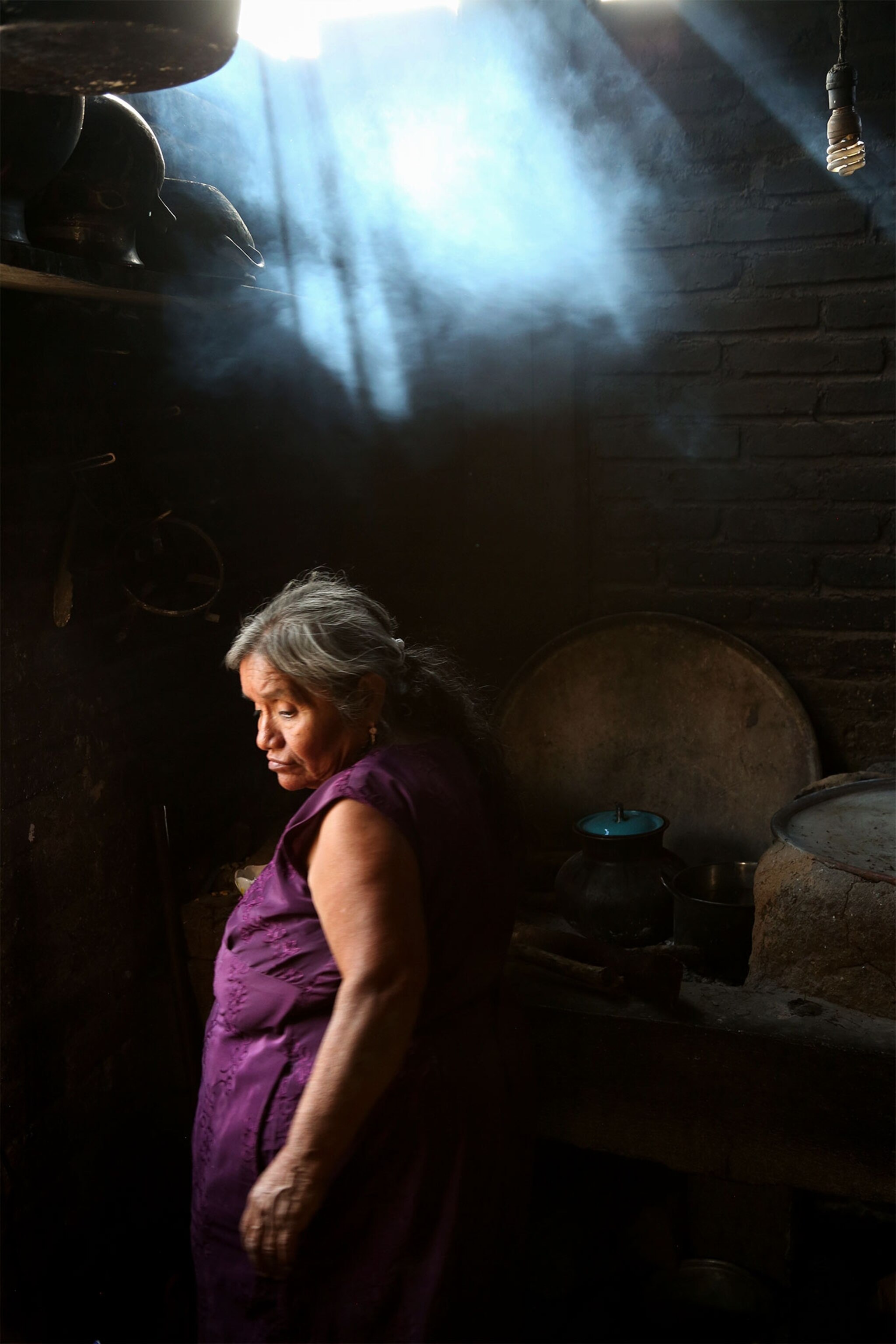
Though wild agaves are abundant in many places now and the pair can generally cut 20 to 30 in a day, there’s a concern that the populations could tragically dwindle on the commons. The Consejo Regulador Mezcal—Mexico’s central agency for mezcal regulations—tracks some of the extraction of agaves, but there is no central effort to survey the population. There is one town in Guerrero where the residents formed a line and walked their communal land end to end to count their agaves, dividing them equally among all residents. Otherwise, no one is counting how many are out in the hills.
“We don’t know exactly how many are out there,” Güendulain said as we drove back towards town. “There’s one type, papalote. There used to be a lot, but not now.”
A Harvest in Trouble?
Boom and bust cycles have always been part of the agave harvest, as clusters of one varietal or another mature simultaneously, but customers abroad don’t necessarily know that. Often, this is driving less sustainable business practices.
“Some people are marketing their mezcals like, ‘Drink this before it goes extinct,’ but that’s bullshit,” says Santiago Suarez, co-founder of Mezcal Amores. “Just plant more of those wild agaves.”
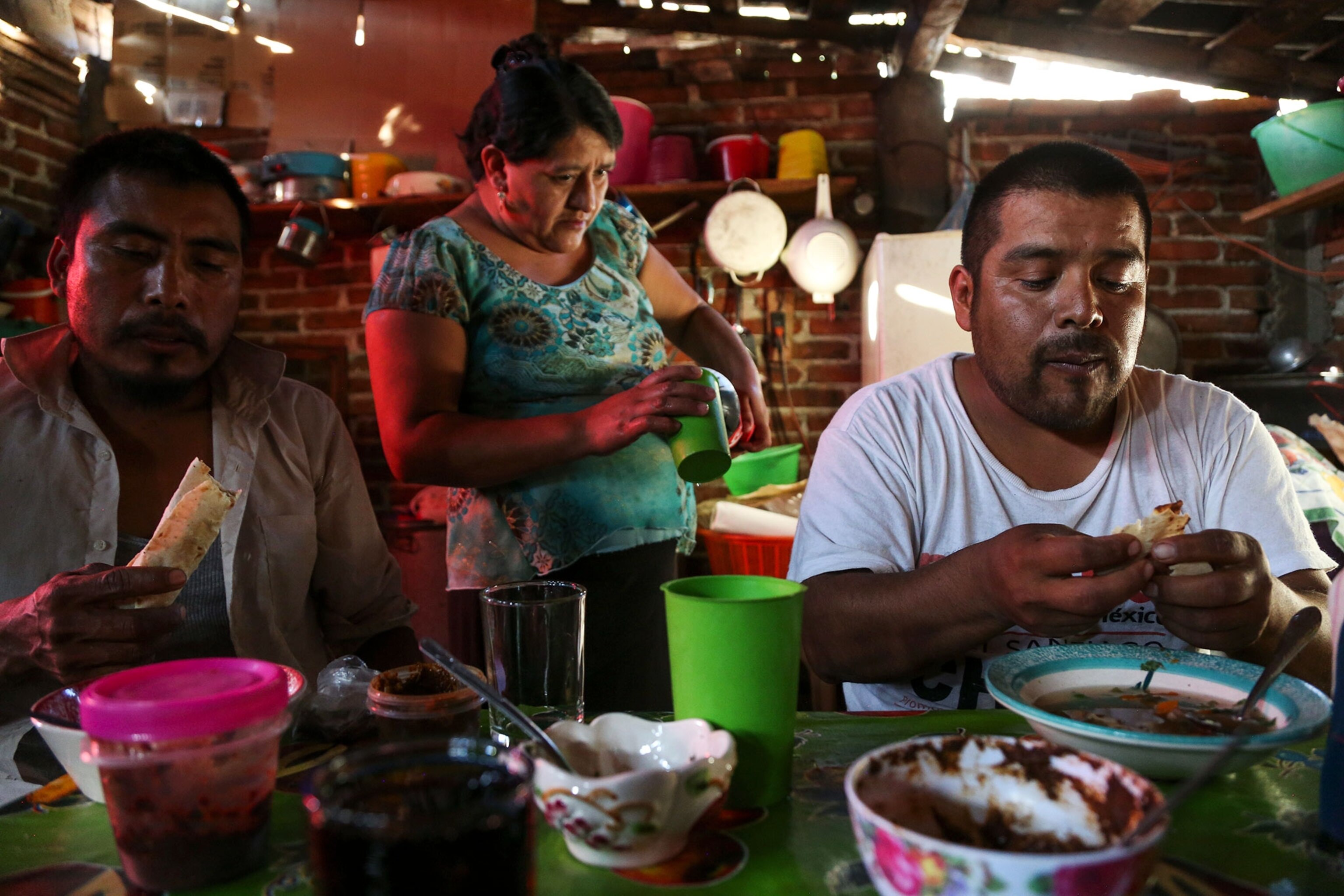
Suarez started sipping mezcal while working at an NGO in Oaxaca and realized that the spirit could be “a contemporary story of Mexico,” by introducing the heritage product to the international scene. In 2010, he launched the company with the core values of being sustainable, organic, fair trade and premium.
Amores is one of the largest mezcal brands on the market at the moment and they’re working to influence the industry to stabilize its future. He’s already turned down an offer from Jose Cuervo to buy Amores. Among other efforts, they’re experimenting with different methods of cultivating wild agave varietals. Suarez has watched harvesters cut the biggest plants from the wild like trophy hunters and so he’s starting to grow different agaves now before the herd is culled. Historically, farmers have shied away from the expense of investing decades in a single crop, but, says Suarez, “we plan to be here for a long time.”
Güendulain’s family started working towards the same goal years ago, planting wild seeds and sprouts among their rows of espadin. We stopped at his father’s palenque to chop down a row of bicuixe—taller agaves with narrow piñas—which are normally only found in the wild. In another field, Güendulain plucked clones sprouting from the base of madrecuixe and coyote, carefully loading the little succulents into the truck to replant in his own nursery. With these plants, he was securing his future.
Though the craft of making mezcal is centuries old, dating back to Mayan agave beer, the industry is still young and small—less than one percent the size of the tequila market—and its future is not set in stone. Every one of the agaves that Güendulain and Amores is sowing now will be important links to the spirit’s heirloom history and a vote for diversity.
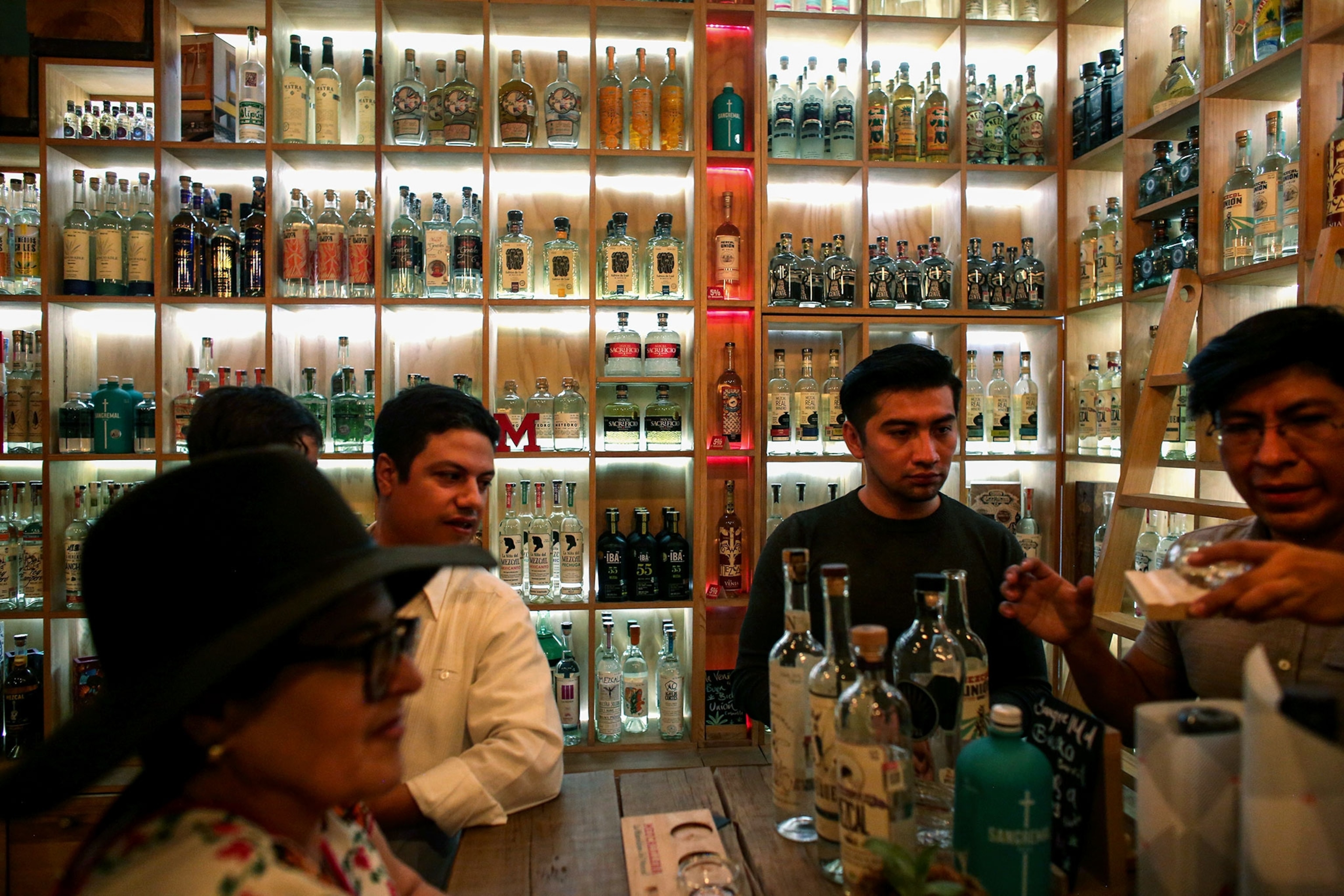
Güendulain backed the truck into a construction site ringed with agave, unloading the day’s haul into the shade and pointing out the site of a new oven and two new stills and then walking me under a tent where he was nurturing baby agaves. Next to the distillery, he pointed to a building that will have a restaurant and dorm rooms for ecotourists. This new palenque will let him distill more than his father and sell directly to the new waves of visitors on the Oaxacan Caminos de Mezal, he dreamed, leaning against a post.
We loaded back into the pickup and pulled around the corner to a little house where mules, goats, chickens, and dogs roamed the yard. An old couple came outside, Güendulain’s parents, and poured us each a shot of sublime mezcal: a madrecuixe harvested from their fields, roasted in their ovens, fermented and distilled at their palenque, and drunk on their farm.
Alec Jacobson is a photojournalist and a National Geographic Young Explorer who has worked on three continents. You can find more about his work on his website: www.alecjacobsonphoto.com.



